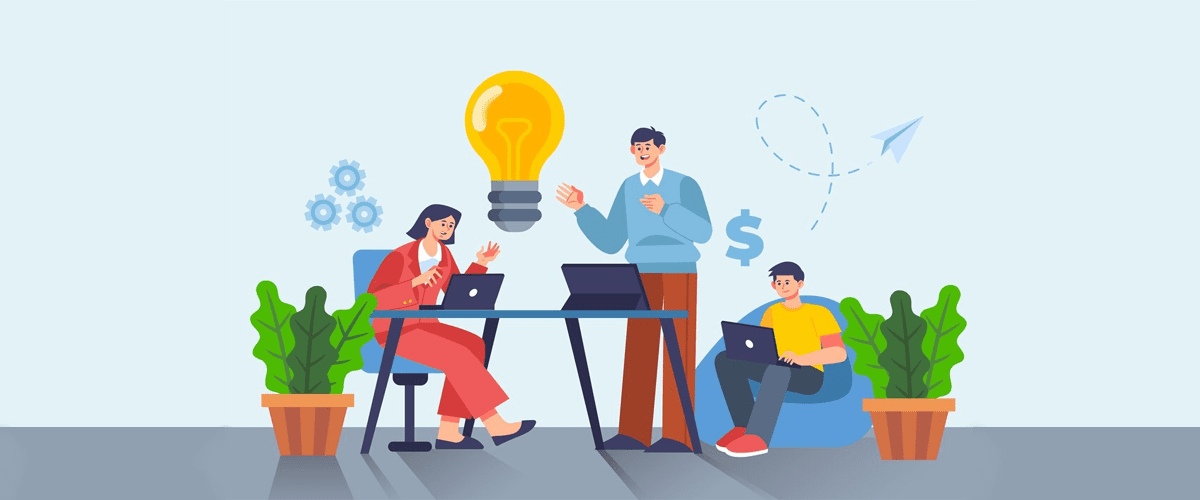The cost of software maintenance is a critical consideration, with studies indicating that it typically ranges from 10% to 20% of the initial project budget each year. The specific expense can vary depending on factors such as software complexity and the number of users. If you opt to engage a dedicated team of developers for software development services, you’ll generally be looking at an hourly rate ranging from to . To comprehend the importance of managing these costs, let’s first establish a clear understanding of what software maintenance entails.
What Is Software Maintenance?
Software maintenance is a process that involves updating and maintaining software after its release. The primary purpose of custom software maintenance is to modify and update the software after the deployment process. With the help of software maintenance, you can able to fix the bugs & enhance the system performance to a great extent. It is the process that can only be done once the software development process is completed. There are different types of software maintenance; they are corrective maintenance, perfective maintenance, adaptive maintenance & preventive maintenance.
What Are the Benefits of Maintaining Software?
Maintaining your software is not a necessity but it is also a perfect way to improve it and establishing better relationships with the end users. Below are the benefits of software maintenance.
Better User Experience
UX design is essential for the sustainable flow of users. A good UX design is the path to your growth. If you want to receive better feedback from your customers and users; you can improve their loyalty and retention by investing in regular interface updates.
Fix Bugs and Glitches
If a website is running poor maintenance then it attracts bugs and glitches. It can make your customers likely to abandon your software if there are constant bugs. So, at this time, you need to constantly add new features to the software to cater to the user’s tastes and preferences. On the other hand, there are times when they will stop using the software.
Avoid Revenue Losses
Let’s understand this concept with the help of an example; like there has been an unfixed bug for quite some time in your software. So, what would you do client-wise? Any user will drop using the software if it is not properly maintained. At that time your paid customers are no exception.
Secure Software from Cyber Threats
Proper software maintenance makes your website secure and secures your apps from cyber threats. On the other hand, if your software is not safe enough then the hackers find weaknesses in your system. Maintenance will allow you to have the latest security regulations and make sure that your data is safe.
Why Software Maintenance is Essential?
Below are the reasons why software maintenance is needed.
Correction of ‘Bugs’
One of the most important parts of the service is the correction of errors or in other words, we can call it bugs. Every software must work without problems. So, remove the hassles and make this task a priority. It is the process that contains the search for errors in the code and their correction. So, problems can occur in the hardware, operating systems or any other piece of software.
Improving Opportunities
It is also considered important in improving the current functions and making the system compatible with changing the environment. It extends the capabilities of programs, work patterns, hardware upgrades, compilers and all the other aspects that affect the workflow of the system.
Eliminate Antiquated Functions
There are some of the functions that are no longer used and unnecessarily occupy the space in the solution. It is the thing that decreases the efficiency of the system. For this reason, it is necessary to remove the obsolete functions. These are the user interface and coding elements that are removed and replaced with the assistance of new functions with the help of the latest tools and technologies.
Performance Improvement
Software maintenance helps to improve the system’s performance to meet the new requirements. Data & encoding constraints as well as reengineering are the parts of software maintenance. It prevents the solution from being vulnerable. It is not the functionality that works in the operations but it evolves to stop serious issues like hacking.
What Factors Impact the Price of Software Maintenance?
Here are some key factors that can impact the price of software maintenance:
Software Complexity
The complexity of the software is a significant factor. More complex software requires more extensive maintenance. Complexity can be related to the size of the codebase, the number of features, and the intricacy of the algorithms involved.
Software Age
Older software often requires more maintenance as it may not be as compatible with modern technologies and may have accumulated technical debt over time. Legacy systems are more expensive to maintain.
Technology Stack
The choice of technology used in the software can affect maintenance costs. Some technologies may have higher licensing fees, or there may be a scarcity of skilled developers for a particular technology, increasing the cost of maintenance.
Third-Party Dependencies
If your software relies on third-party libraries, APIs, or services, you may need to account for potential changes or updates in those dependencies. Integration with third-party components can introduce additional maintenance costs.
Scale and Usage
The number of users and the scale at which the software is used can impact maintenance costs. More users and higher usage can lead to increased demands on the system, potentially requiring more resources for maintenance.
Customization and Modifications
The level of customization in the software can affect maintenance costs. Highly customized software may require more effort to maintain compared to off-the-shelf solutions.
Security Requirements
Security is a crucial aspect of software maintenance. Regular security updates and patches may be necessary to protect against evolving threats. The more security-critical the software, the higher the maintenance costs.
Regulatory Compliance
If the software must adhere to specific industry regulations or standards, there may be ongoing costs associated with compliance, including updates and audits.
Vendor or In-House Maintenance
Whether you choose to outsource maintenance to a third-party vendor or handle it in-house can impact costs. Vendor maintenance may come with service contracts and associated fees.
Documentation and Knowledge Transfer
The availability of comprehensive documentation and the knowledge transfer process can affect maintenance costs. Poor documentation and a lack of institutional knowledge can lead to increased expenses.
Geographical Location
The location of the maintenance team can also influence costs. Labour costs can vary significantly between regions, affecting the overall price of maintenance.
Service Level Agreements (SLAs)
If you require a high level of service, such as 24/7 support, you may incur additional costs compared to standard business hours support.
Software Development Methodology
The software development methodology used, such as Agile, DevOps, or Waterfall, can impact maintenance. Agile methodologies, for example, may allow for a more rapid response to maintenance needs.
Scope of Maintenance
Defining the scope of maintenance is critical. It can range from simple bug fixes to adding new features or major updates. A well-defined scope helps manage costs.
Evolving User Requirements
If user requirements change over time, the software may require adjustments or new features. Adapting to evolving user needs can influence maintenance costs.
Tooling and Infrastructure
The tools and infrastructure used for maintenance tasks can also affect costs. Up-to-date and efficient tools can streamline maintenance processes.
Economic Factors
General economic conditions, inflation, and currency exchange rates can impact the cost of maintenance, especially if you’re outsourcing maintenance to a different country.
How to Reduce Software Maintenance Costs?
Regular Code Refactoring
Improve code quality and structure to reduce future maintenance efforts.
Automated Testing
Implement automated testing to catch and fix bugs early, reducing manual testing and maintenance costs.
Documentation
Ensure comprehensive documentation to ease troubleshooting and updates.
Version Control
Use version control to track code changes and identify issues quickly.
Prioritize Bug Fixes
Focus on critical issues and address lower-priority bugs during regular maintenance cycles.
Monitoring and Alerting
Proactively monitor for issues to prevent costly problems.
Regular Updates
Keep dependencies and libraries up to date for security and compatibility.
Efficient Change Management
Control and track changes to avoid unauthorized and untested modifications.
User Training
Train users to reduce support requests and misunderstandings.
Sustainable Practices
Adopt Agile and DevOps for thorough testing and integration.
Optimize Infrastructure
Optimize server and infrastructure costs based on actual demand.
Outsourcing
Consider outsourcing certain maintenance tasks to specialists.
Predictive Analytics
Use predictive analytics to anticipate maintenance needs.
Budget Allocation
Allocate a specific budget for maintenance to avoid diverting funds.
Software Retirement
Regularly evaluate and retire unnecessary software to reduce maintenance costs.
Regular Audits
Audit software and processes to identify inefficiencies.
Standardized Practices
Promote standardized development practices for efficiency.
Wrapping Up
Software maintenance is a necessity that is caused by various reasons. With the continuous changes in the business environment, the complexity of modern software products. These are the emerging needs of clients; the high rate of technology development is only one factor influencing the need for maintenance and its overall cost. Continuous software product maintenance will cost you much. On the other hand, what matters is what you get in return. By having the proper approach to software maintenance, you can able to maximize your ROI, enhance customer satisfaction, and improve productivity and reliability. So, if you are also looking for an IT solution provider or further maintenance of your product then you can consult our expert team.
 +91 141-4009009
+91 141-4009009 +1 (972) 215-7421
+1 (972) 215-7421

 USA - Dallas Registered
USA - Dallas Registered
 India Jaipur - Corporate
India Jaipur - Corporate